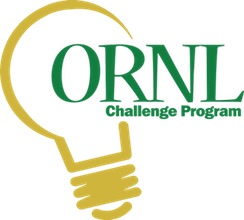 Oak Ridge National Laboratory has opened up submissions for their ORNL Challenge Program. Designed to propel the careers of bright young minds in computational science, the challenge program offers college students 10-week paid internships at Oak Ridge National Lab, DOE’s largest multi-program science and energy laboratory.
Oak Ridge National Laboratory has opened up submissions for their ORNL Challenge Program. Designed to propel the careers of bright young minds in computational science, the challenge program offers college students 10-week paid internships at Oak Ridge National Lab, DOE’s largest multi-program science and energy laboratory.
Oak Ridge National Laboratory wants to pinpoint and capture some of the best new minds entering scientific and engineering fields today by using a unique competitive process, one that is attractive to students who want to be involved in grand challenge science and make a difference in the world. Learn more about how you can participate in the ORNL Challenge program and become an integral part of scientific discovery at ORNL!
Junior and Senior undergraduate students are encouraged to apply with proposals that identify possible solutions to one or more of the official Challenge Questions.
Current ORNL Challenge Questions include:
- Simulation and Design of Artificial Model Magnets Challenge. Understanding the collective properties of frustrated magnets is currently a central focus at Oak Ridge National Laboratory. In order to analyze neutron scattering experiments on real materials, we are seeking original approaches to simulate the behavior of models magnets and design macroscopic artificial magnets that expose their emergent behavior.
- The ORNL Distributed Energy Research Challenge. Remote terrestrial and ocean environments are often characterized by complex topography which strongly modulates the spatial and temporal distribution of water resources, incoming solar radiation, and winds and clouds that result from the organization of solar radiation by topography and tend to exhibit strong diurnal and seasonal cycles. For example, fog and weak winds in the early morning hours, clear sky and strong gross-valley winds at mid-day, widespread development of clouds in the mid to late afternoon, strong down valley winds at nighttime. The National Renewable Energy Laboratory has produced nation-wide assessments of bulk renewable energy resources at coarse spatial and temporal scales. How would you go about determining the optimal blend of different types of renewable energies (solar, wind, ocean-waves, hydropower, biomass) at the community scale that meets current and evolving demand (economic development plans, population dynamics)?
Applications are due by January 15, 2016.



